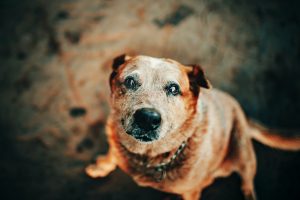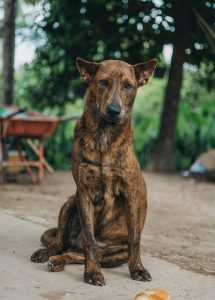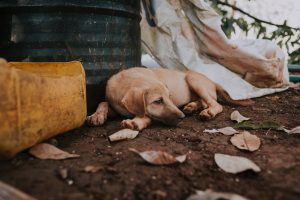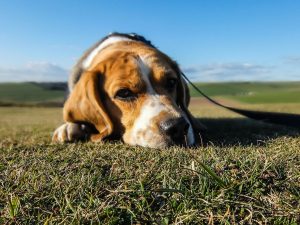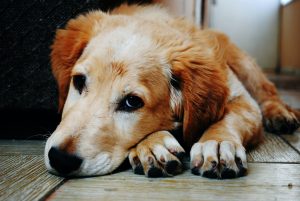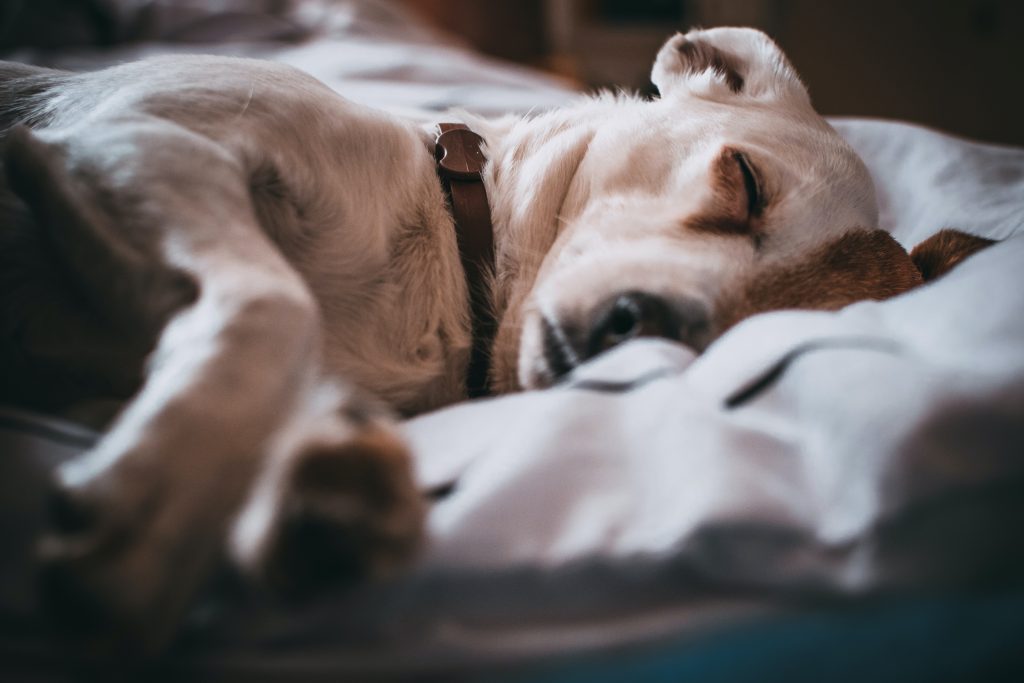
Posts by:
Dr. Phil Zeltzman, DVM, DACVS, CVJ
Dog Diseases & Conditions A-Z
Kelly Serfas, a Certified Veterinary Technician in Bethlehem, PA, contributed to this article.
Several types of swellings can occur near the elbow:
- Benign tumors
- Cancerous tumors
- Hygromas
If you notice swelling on your dog’s elbow, don’t panic. Even cancerous tumors may be treatable, and the bump may not be a tumor at all. Schedule an appointment with your veterinarian right away. Your veterinarian will be able to determine the cause of the swelling. If it turns out to be a hygroma, here’s what you should know.
What is a hygroma?
A hygroma is a non-painful swelling at the tip of the elbow, on top of the “funny bone” (called the olecranon). This swelling is full of fluid. In theory, a hygroma can occur in other locations, but is most common at the elbow. It can happen in one elbow or occasionally both.
Which breeds can be affected by a hygroma?
This condition is usually seen in large or giant breed dogs. Of course there are exceptions: it can happen in smaller breeds.
Short-haired dogs are more commonly affected. Dogs with long hair are thought to have more “padding” because of their long fur, but hygromas can occur in any breed.
Why does a hygroma mostly occur in young dogs?
Puppies (typically 6 to 18 months), have normal skin over their elbows. As they grow they experience gentle trauma to the skin over the elbow. In response, the skin thickens and forms a callus to protect itself. This is similar to the bottom of human feet. As babies start walking and running, the bottom of their feet becomes thicker and more protective.
What causes a hygroma?
A hygroma is caused by repeated trauma to the tissue around the tip of the elbow when the dog rests on a hard surface (hardwood floor, tile, concrete etc).
How will my vet diagnose a hygroma?
A hygroma is presumed based on breed, age and appearance. Your family vet will need to make sure the swelling is not a tumor. Confirmation can be provided by taking a sterile sample of the fluid with a needle and syringe. Care needs to be taken not to drive bacteria from the skin into the swelling or an abscess may develop. The fluid sample can be sent to the lab for analysis if there is still a doubt.
How is a simple hygroma treated?
If the hygroma is treated early, or at its first and uncomplicated stage, treatment may be as easy as changing your dog’s hard bedding to a well-padded surface. You can place several beds around the house, especially on hard surfaces where your dog likes to lay down. Sometimes a bandage is needed around the elbow. Veterinarians may suggest other treatments, including:
- Injection of medications
- A splint
- Removing the fluid
- Placement of bandages
These treatments may or may not have any effect so continue to work with your veterinarian if they are recommended.
When is surgery needed to treat a hygroma?
A hygroma is called “complicated” when it becomes infected or ulcerated. “Ulcerated” means that there is an ulcer, a hole, or an open wound in the skin. Think of it as a pressure sore. If this happens, surgery may be necessary to solve the problem. In this day and age, surgery is typically used when all other options have failed.
After surgery, your vet will need to clean the infection up and possibly place a drain to allow the fluid to continue to drain until the area is healed. Bandages may be placed to protect the surgical site and keep the drain clean.
Eventually, the body will create a natural callus at the point of the elbow to provide protection.
What is the care needed at home after hygroma surgery?
Pain medications and antibiotics will need to be given at home. If a bandage was applied after surgery to protect the drain, it will need to be changed multiple times. It’s important to understand that surgery fixes the problem, but it does not prevent a recurrence. So you have a critical role in protecting your dog’s elbow from future trauma. The type of flooring and bedding provided is very important. Again, the goal is to prevent contact with hard surfaces and pressure on the elbow.
What if my dog won’t use the doggie beds?
Certainly, some dogs can be a little bit stubborn. Some companies sell a special contraption that protects the elbow. You should discuss this with your veterinarian first. It’s great because it protects the elbow from repeated injury. However, the more you protect the elbow, the less likely it is to develop a protective callus.
There are also multiple bedding options
- Sheepskin bedding
- Thick fleece
- Egg-crate foam
- Thick rubber mats
- etc…
All can be protected with a cover for easy cleaning
What can I expect after hygroma surgery?
Simple hygromas usually heal nicely within a few weeks. Complicated hygromas can be much harder to treat successfully, so the outcome is more difficult to predict. Your family vet may refer you to a board-certified surgeon when reconstructive surgery is needed. In the vast majority of cases, we can achieve good to excellent results.
